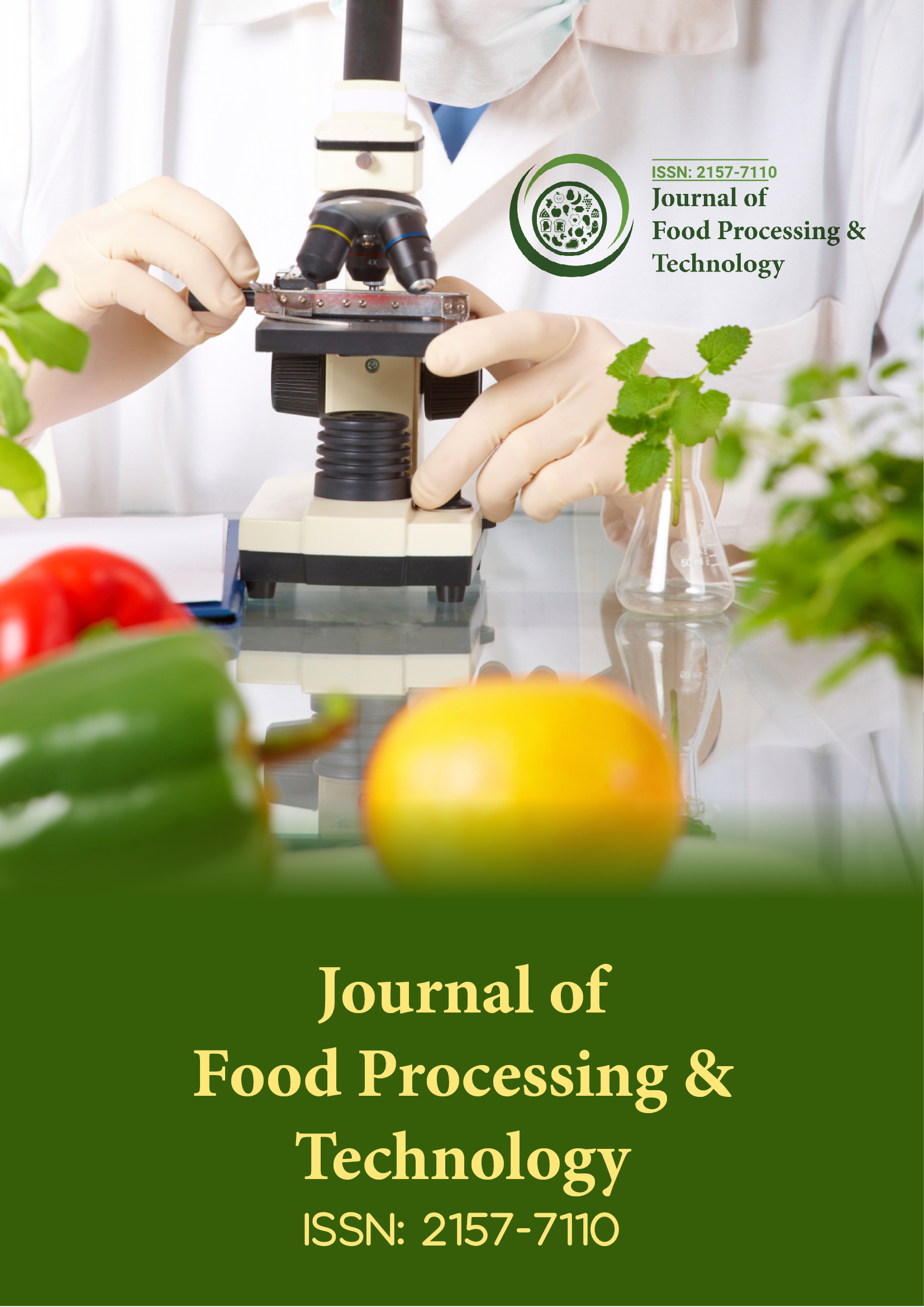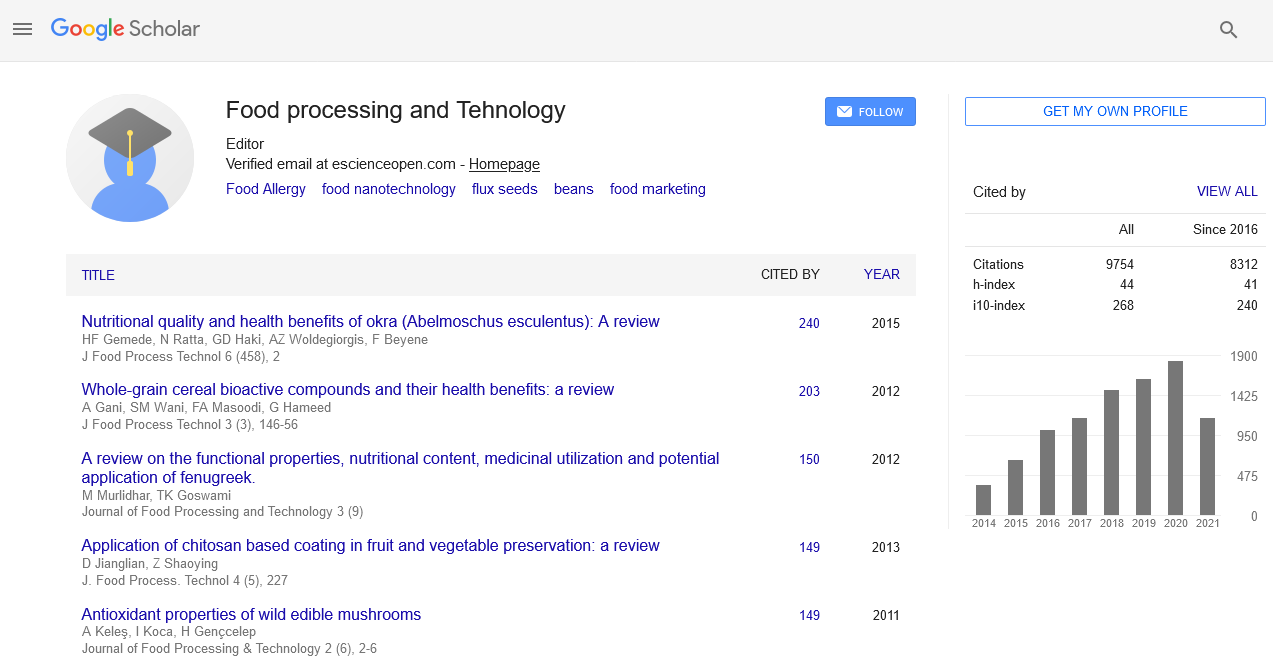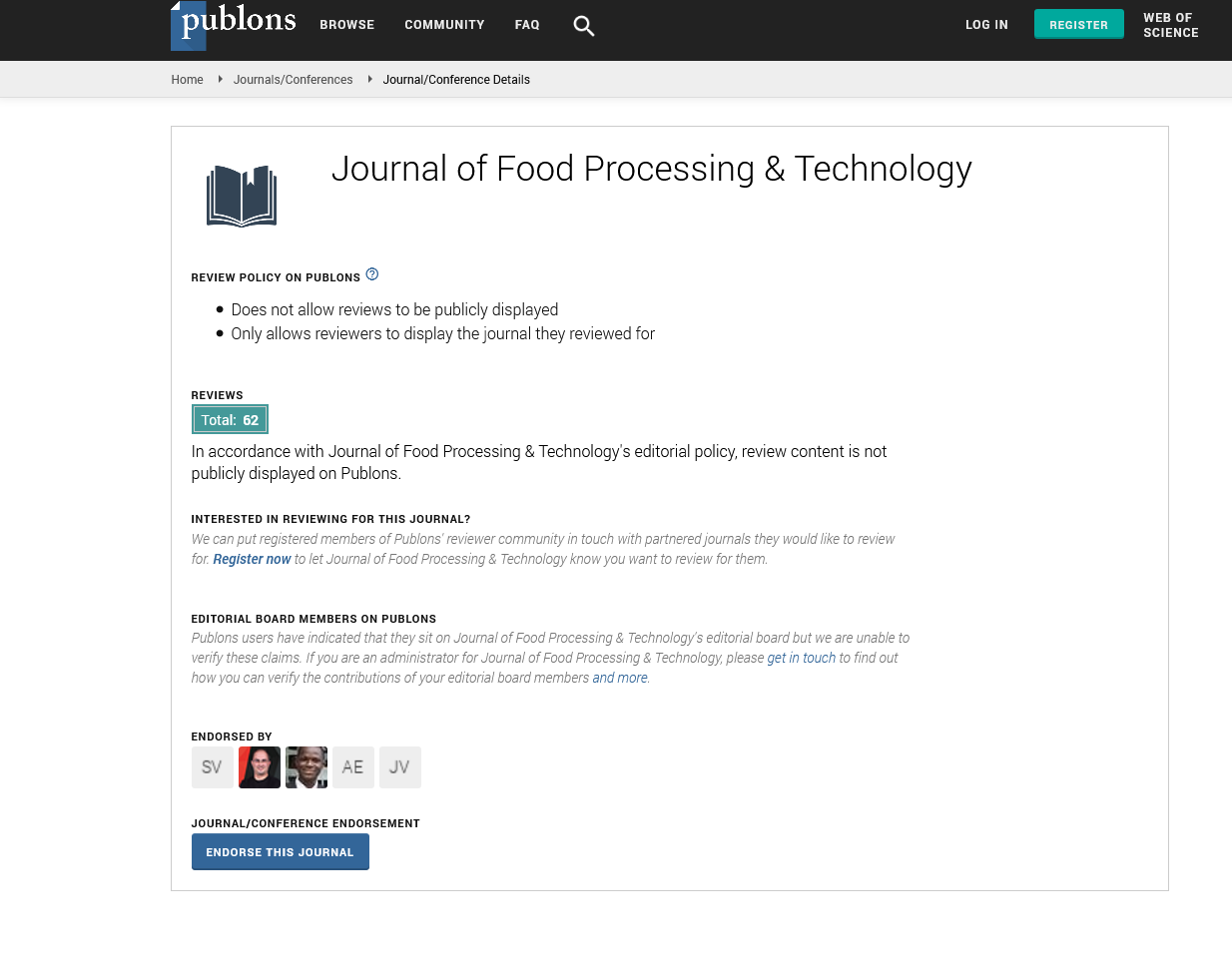Indexed In
- Genamics JournalSeek
- Academic Keys
- JournalTOCs
- China National Knowledge Infrastructure (CNKI)
- Access to Global Online Research in Agriculture (AGORA)
- Centre for Agriculture and Biosciences International (CABI)
- RefSeek
- Directory of Research Journal Indexing (DRJI)
- Hamdard University
- EBSCO A-Z
- OCLC- WorldCat
- Scholarsteer
- SWB online catalog
- Publons
- Euro Pub
- Google Scholar
Useful Links
Share This Page
Journal Flyer

Open Access Journals
- Agri and Aquaculture
- Biochemistry
- Bioinformatics & Systems Biology
- Business & Management
- Chemistry
- Clinical Sciences
- Engineering
- Food & Nutrition
- General Science
- Genetics & Molecular Biology
- Immunology & Microbiology
- Medical Sciences
- Neuroscience & Psychology
- Nursing & Health Care
- Pharmaceutical Sciences
Identification and quantification of volatile compounds in cocoa liquors obtained from ICS 95 TCS 01 varieties
World Food Science & Technology Congress
October 15-16, 2018 Athens, Greece
Palencia-Blanco Cristian,Gualdron-ZambranoAlejandra, Guarin-HenaoIsabel,OjedaGaleano Yuly,Villamizar Jaimes Arley,Lopez-Giraldo Luis-Javier Zarate-Caicedo Diego
Industrial University of Santander, Colombia
Colombian Agricultural Research Corporation CORPOICA, Colombia
Posters & Accepted Abstracts: J Food Process Technol
Abstract:
The aromatic quality of cocoa liquors has a direct relationship with the volatile compounds present in the different varieties of cocoa (Rodriguez-Campos et al. 2011; Aprotosoaie et al. 2016; Afoakwa et al. 2008). Although the literature is extensive in the identification of compounds associated with the aroma of cocoa, there are few articles that propose methods for their quantification. Normally, quantification is performed by means of an internal standard using a reference compound to quantify all sample compounds (Counet et al. 2004). However, this approach is not accurate because a constant response factor is assumed for all the compounds in the sample. Another approach for quantification is the use of external standards (Bonvehí 2005; Ducki et al. 2008); in this case, a reference compound is used for each compound to be quantified (an external standard per compound); the disadvantage of this approach is the cost associated with the purchase of external standards. This article proposes a semi-quantitative method that includes an internal standard combined with external standards (one per family); in order to obtain a better determination of the concentration volatile compounds aroma precursors in cocoa liquors. For this work, the volatile compounds were extracted from the cocoa liquor using the solid phase micro extraction technique (SPME-HS) and were identified by means of gas chromatography coupled to mass spectrometer (GC-MS) and Kovats retention index. Regarding quantification, toluene was used as an internal standard and a reference compound (present in the sample) was used for each group or family of compounds as an external standard. The method was evaluated using figures of merit like limit of detection (LOD), limit of quantification (LOQ), intermediate precision and percentage of recovery 54 volatile compounds were identified and quantified from the ICS 95 and TCS 01 cocoa varieties produced in the department of Santander, Colombia. The implemented method obtained an LOD and LQD 0.024 ?g/kg and 0.037 ?g/kg respectively. Regarding accuracy, the proposed method was able to recover up to 96% of the compound of interest in the sample to be analyzed. According to the precision of the method, the results show that the concentrations have an average CV% of 7.38%. Finally, the compounds with the highest concentration were acetic acid (42,633 mg/kg), 2-phenylethyl acetate (29.44 mg/kg), 2-phenylethanol (12,595 mg/kg) and 2, 3, 5, 6-tetramethylpyrazine (8.601 mg/kg) found in the samples analyzed. According to the results presented, this method can be used to determine the concentrations of volatile compounds in cocoa liquors.
Biography :
Palencia-Blanco Cristian is pursuing his Master’s degree in Chemical Engineering from Industrial University of Santander, Colombia.
E-mail: kristago1204@hotmail.com


